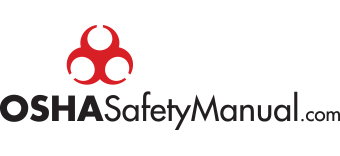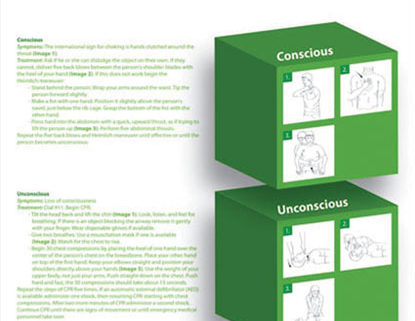Choking Emergency Safety
Full Color Motivational Safety Poster 18″ x 24″ Laminated
CHOKING EMERGENCIES
Conscious
Symptoms: The international sign for choking is hands clutched around the throat (Image 1).
Treatment: Ask if he or she can dislodge the object on their own. If they cannot, deliver five back blows between the person’s shoulder blades with the heel of your hand (Image 2). If this does not work begin abdominal thrusts:
– Stand behind the person. Wrap your arms around the waist. Tip the person forward slightly.
– Make a fist with one hand. Position it slightly above the person’s navel, just below the rib cage. Grasp the bottom of the fist with the other hand.
– Press hard into the abdomen with a quick, upward thrust, as if trying to lift the person up (Image 3). Perform five abdominal thrusts.
Repeat the five back blows and abdominal thrusts until effective or until the person becomes unconscious.
Unconscious
Symptoms: Loss of consciousness
Treatment: Dial 911. Begin CPR:
– Tilt the head back and lift the chin (Image 1). Look, listen, and feel for breathing. If there is an object blocking the airway remove it gently with your finger. Wear disposable gloves if available.
– Begin 30 chest compressions by placing the heel of one hand over the center of the person’s chest on the breastbone. Place your other hand on top of the first hand. Keep your elbows straight and position your shoulders directly above your hands (Image 2). Use the weight of your upper body, not just your arms. Push straight down on the chest. Push hard and fast, the 30 compressions should take about 15 seconds.
– Give two breaths. Use a resuscitation mask if one is available (Image 3). Watch for the chest to rise.
Repeat the steps of CPR. If an automatic external defibrillator (AED) is available follow the instructions for the device, then resume CPR starting with chest compressions. If the person still has not regained a pulse after two more minutes of CPR, the AED will prompt you to administer another shock. Continue CPR with the use of the AED until the person begins breathing or until emergency medical personnel take over.



